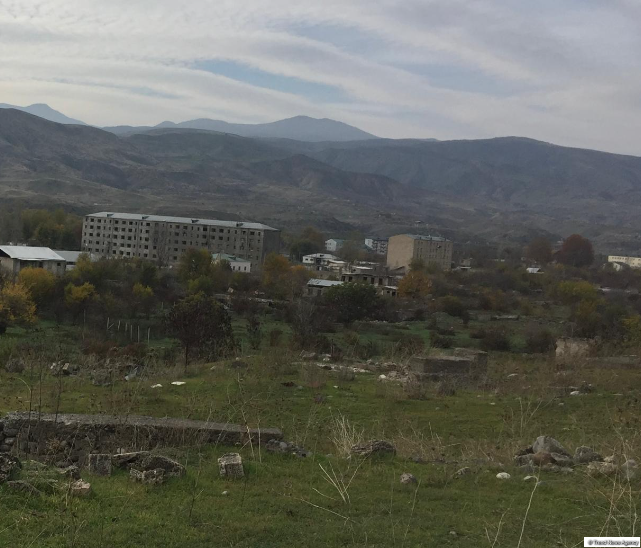AsianScientist (May. 09, 2025) – One afternoon in 2022, when 60-year-old Lekshmi could no longer bear the chest pain she had been brushing off as gastritis for the past few weeks, she rode her scooter to a private hospital near her home in Alleppey, a city in southern India. The doctors at the hospital ran a few tests and advised her to get admitted for checkups. But Lekshmi declined. She told the doctors that she lived alone and would prefer to come back when her daughters, who lived outside Alleppey, could join her.
The doctors gave her a prescription and let her go. Hearing about the incident from Lekhsmi, her daughter, Lata, rushed to Alleppey, only to find her mother calmly rolling chapatis in the kitchen, unfazed by the event. Lata consulted another doctor about her mother’s condition. Lata told Asian Scientist Magazine that when the doctor read the prescription, he said that her mother most likely suffered a “cardiac event” that afternoon. A cardiac event encompasses a range of heart conditions that include heart failure and damage that impairs heart function.
The conversation with the doctor left Lata with several nagging questions. “Why did the doctors let my mother ride back alone from the hospital? Why did they not insist on calling a family member that day? What if something worse had happened?” Lata recalled.
Lekshmi’s story highlights a systemic problem—the underrepresentation of women in cardiovascular disease (CVD) research and treatment, leading to a medical culture that pays less attention to women’s heart health in comparison to that of men’s. According to the American College of Cardiology, CVD has historically been viewed as a predominantly male disease, but epidemiological studies show a greater incidence of CVD among women, especially in postmenopausal age groups.
CVD is also the leading cause of death in women, according to a 2021 report in The Lancet. Despite that, “cardiovascular d i s e a s e in women remains understudied, under- recognized , underdiagnosed, and undertreated,” stated the Lancet report.
THE GENDER GAP
“It is a common misconception that heart disease is a ‘man’s problem’,” said Sarita Rao, a senior interventional cardiologist at Apollo Hospitals, Indore, India, in an interview with Asian Scientist Magazine. She added that several factors have contributed to the misconception. One of them is that “CVD in men often presents with classic symptoms like sharp chest pain,” explained Rao. “Women, on the other hand, tend to present with atypical symptoms such as fatigue, dizziness, breathlessness or general discomfort. Many women describe their symptoms as simply ‘not feeling well,’ which makes their cardiac issues harder to identify, resulting in delays in diagnosis by physicians.”
Adding that more studies are needed to understand the reasons behind the difference in presentation of the symptoms between men and women, Rao said that “women often arrive at hospitals 12 hours later than men after symptoms appear.” That’s because, she added, women tend to ignore symptoms, assume they aren’t serious, or avoid disrupting family routines.
“This delay contributes to poorer outcomes in cardiac emergencies,” said Rao. Another factor influencing underdiagnosis and delayed diagnosis of women’s cardiac issues is their underrepresentation in cardiac research. Women continue to be less represented in CVD clinical trials, according to a 2024 review study in American Heart Journal. But the same trial results are used to create guidelines for heart health for a wider population.
“Women comprise only 20-30 percent of participants in clinical trials for cardiology,” said Rao who added that there are systemic issues behind this disparity. “Most clinical trials are conducted by male principal investigators, with fewer women in research leadership roles. Limited funding for women researchers also affects their ability to lead studies. Consequently, findings from male-centric studies are often extrapolated to women, despite physiological differences like pregnancy, menopause and hormonal variations.”
“Many global bodies, including the World Health Organization, have called for an increased focus on women’s health. That really is the very start to greater gender inclusivity and closing the gender gap,” Jeanne Ong, a cardiologist at the Ng Teng Fong General Hospital, Singapore, told Asian Scientist Magazine. “However, these initiatives need to be followed up by change and awareness in all aspects of cardiovascular research and design, including providing more funding for sex-specific research, having more female leads and participants in research teams, and educating individual patients on the contribution they can provide.”
LACK OF LOCALIZED RESEARCH
Women can develop heart disease at any age, but the risk significantly increases after menopause, according to a 2023 study in Archives of Medical Science. Before menopause, estrogen, a hormone that helps in the development of female sexual characteristics, provides protection against heart disease by delaying its onset. The study emphasized the importance of monitoring the health of women in their middle age, which is when early interventions can be implemented to reduce the risk of CVD.
While the medical fraternity is gradually beginning to pay attention to women’s heart health after menopause, the heart conditions of younger women—such as heart attacks or broken heart syndrome, caused by a temporary weakening of the heart muscles—remain largely understudied, with treatment guidelines often lacking specificity for women, said Ong.
The issue of unequal representation of women in heart research and treatment gets more worrisome in the South Asian context because the region carries about 60 percent of the global burden of CVD, according to a 2022 report in the Journal of Global Health. The prevalence of hypertension, one of the big risk-factors for CVD, is highest among women in South Asia. However, there are not enough localized studies on women’s heart health.
“Most clinical studies in this area are conducted outside India. While some data exists in Indian journals, we need more comprehensive studies to address the unique challenges faced by Indian women,” said Rao.
LEADING THE WAY
Noticing the gender gap in heart research and treatment, women researchers are stepping up to bridge it. For example, Carolyn Lam, a cardiologist at the National Heart Centre of Singapore, founded the Women’s Heart Clinic in 2016. “We have chosen to put women’s needs at the ‘heart’ of our services and empower more women to take charge of their own heart health,” said Lam, in a press release issued by KK Women’s and Children’s Hospital, Singapore.
Like Lam, both Rao and Ong stress the importance of educating women about heart health and recognizing the symptoms of heart disease. This ensures they don’t ignore warning signs such as fatigue or dizziness, as Lekshmi did, and instead seek basic diagnostic tests like an electrocardiogram. Rao also advocates for sustained public awareness campaigns across Asia to dispel the misconception that cardiovascular disease is mainly a “man’s problem.”
—
This article was first published in the print version of Asian Scientist Magazine, January 2025.
Click here to subscribe to Asian Scientist Magazine in print.
Design: Yipei Liew/ Asian Scientist Magazine
Copyright: Asian Scientist Magazine.
Disclaimer: This article does not necessarily reflect the views of AsianScientist or its staff.


